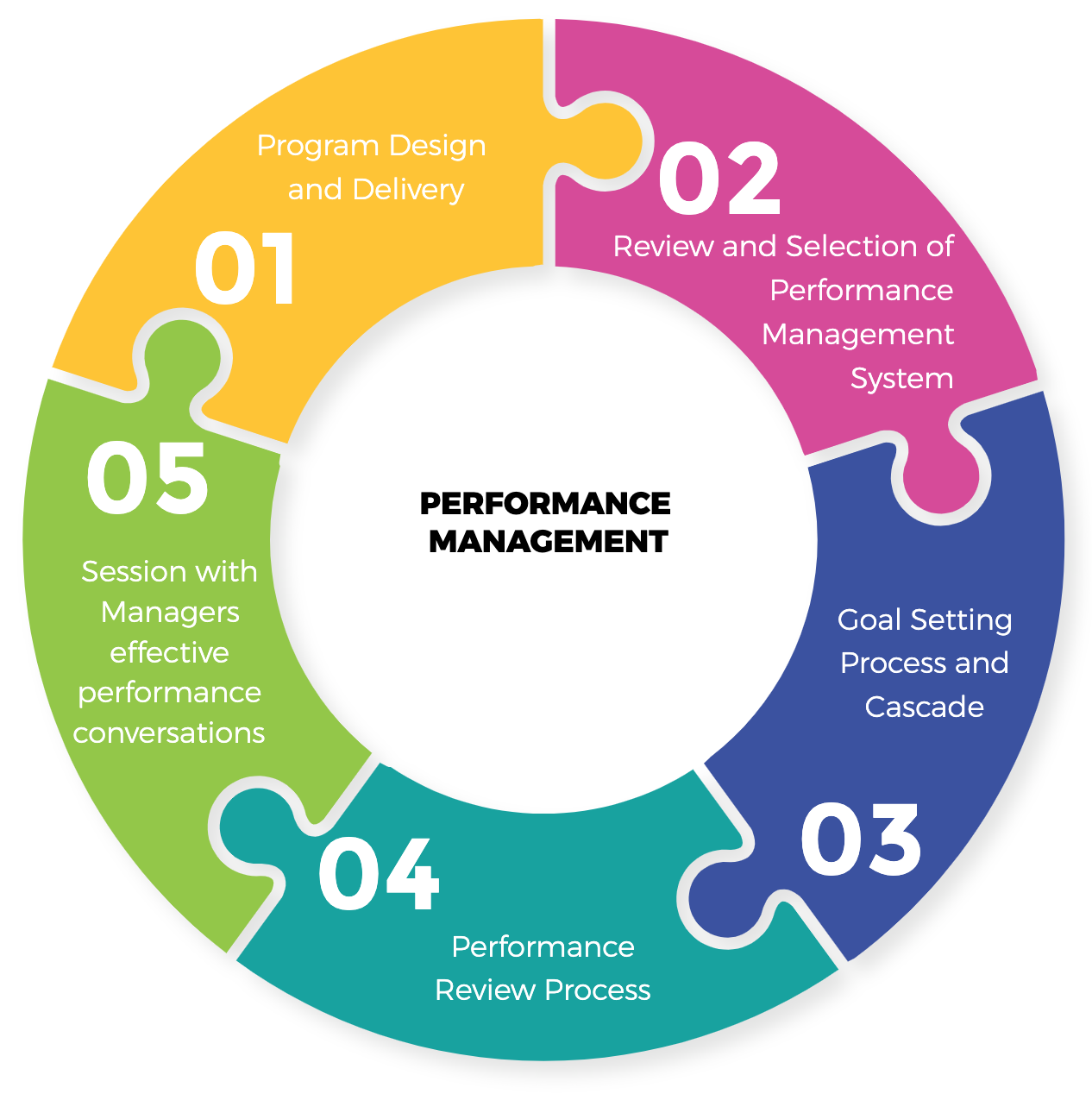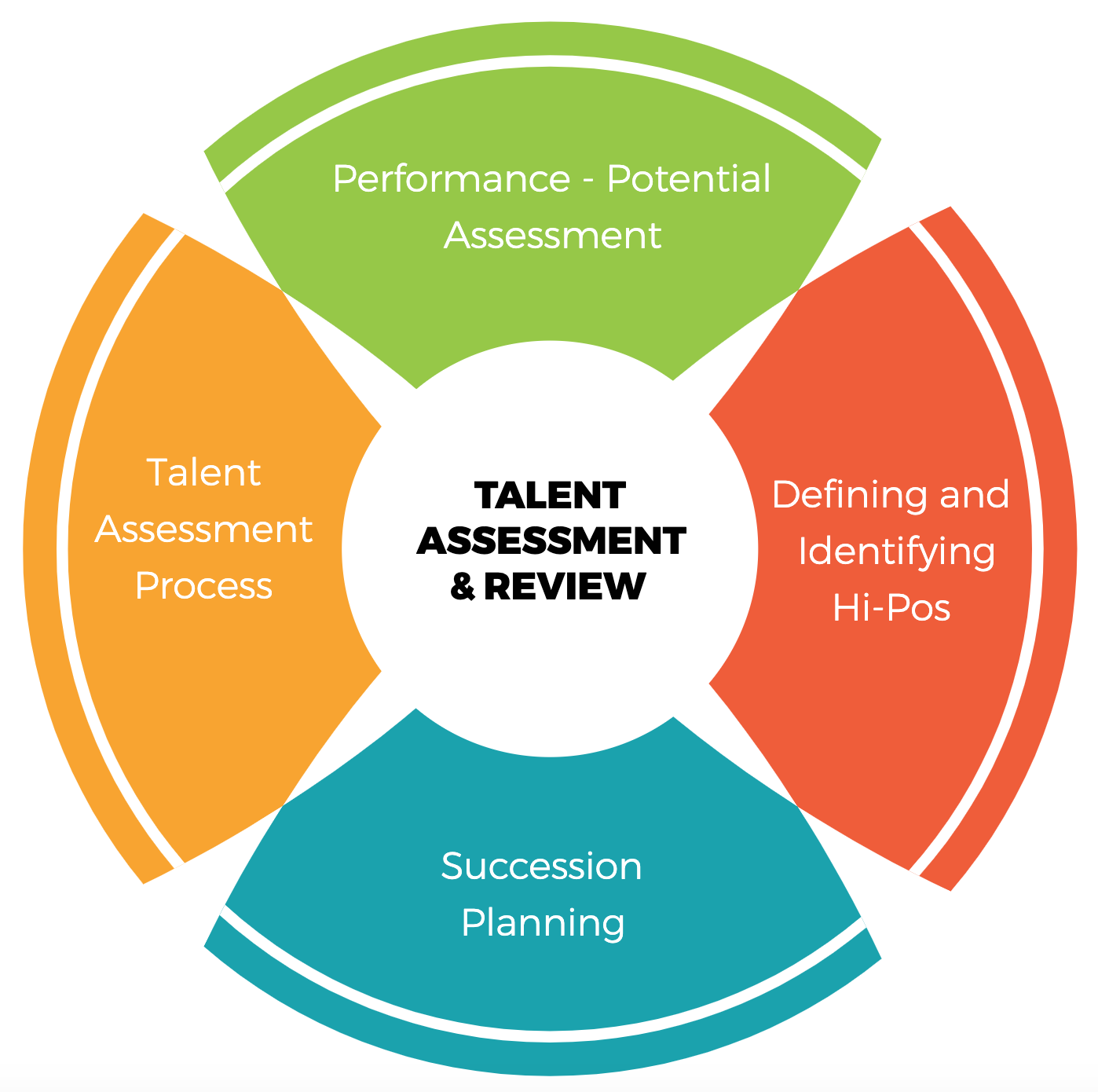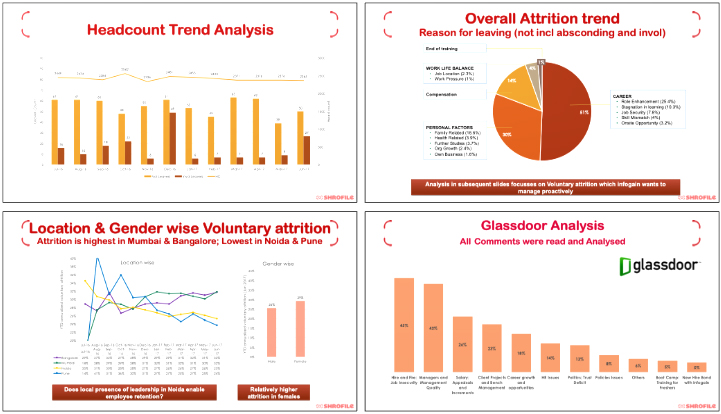

Talent Review and Analytics is a strategic HR process that goes beyond performance management and focuses on developing employees' potential for the future. Talent Analytics involves using statistics, technology, and expertise to analyze large sets of people data, helping organizations make better decisions about their workforce.
Performance management is a continuous process that involves setting clear expectations, providing regular feedback, and evaluating an employee's performance in meeting their goals and objectives. It encompasses various HR processes, such as goal-setting, coaching, feedback, development planning, and performance evaluation, to help employees achieve their potential and enhance organizational productivity. The primary aim of performance management is to align employee performance with organizational goals, identify performance gaps, and develop strategies to close those gaps.
Performance Management includes:


Strategic Talent Assessment and Review is a crucial aspect of talent management, where leadership analyzes various components of the talent management system. This process involves:
Workforce analytics is a data-driven approach that utilizes algorithms to analyze employee data and provide ROI evidence for workforce-related decisions. It helps organizations gain insights into future workforce planning and is commonly used in talent management, where the focus is specifically on leveraging employee data.
Workforce Analytics include -

Shrofile HR Consultancy, Read our latest information to stay up to date with all the latest HR issues.
A talent review is a process used by organizations to assess the current and potential capabilities of their employees. The goal of a talent review is to identify top performers and high-potential employees, as well as to identify areas where the organization may need to focus its development efforts.
The process typically includes a combination of individual assessments, group discussions, and performance data analysis. It may also involve input from managers, peers, and subordinates. The outcome of the talent review process is often used to make decisions about promotions, compensation, and succession planning.
The specific steps of a talent review process can vary depending on the organization, but it typically includes the following steps:
Defining the talent review process: Establishing the objectives, scope, and criteria for the talent review.
Identifying and assessing employees: Collecting data on employee performance, potential, and development needs.
Group Discussions: Reviewing employee performance and potential in groups, and discussing how to best manage and develop the organization's talent.
Prioritizing and Action Planning: Identifying key talent and high-potential employees, and developing action plans to manage and develop them.
Follow-up and Evaluation: Monitoring progress and evaluating the effectiveness of the talent review process.
In summary, Talent review is a comprehensive process that organizations use to identify and develop their top performers and high-potential employees to ensure that they have the right people in the right roles to achieve business goals.
As you assess your team, the focus should be on development and areas for improvement. Identify areas that are less efficient, address gaps and remove bottlenecks within the hierarchy of the organization that impede progress.
A talent review asks business leaders to assess employees across the organization on performance and future potential. Completing a talent review helps companies uncover talent gaps and identify high potential employees.
Talent is a blend of qualities unique to you. It is something you are really good at, usually much better than the ones around you. Its power comes from the mix of different qualities, which come together to create one full power – yours. ... No two people will have the same talent.